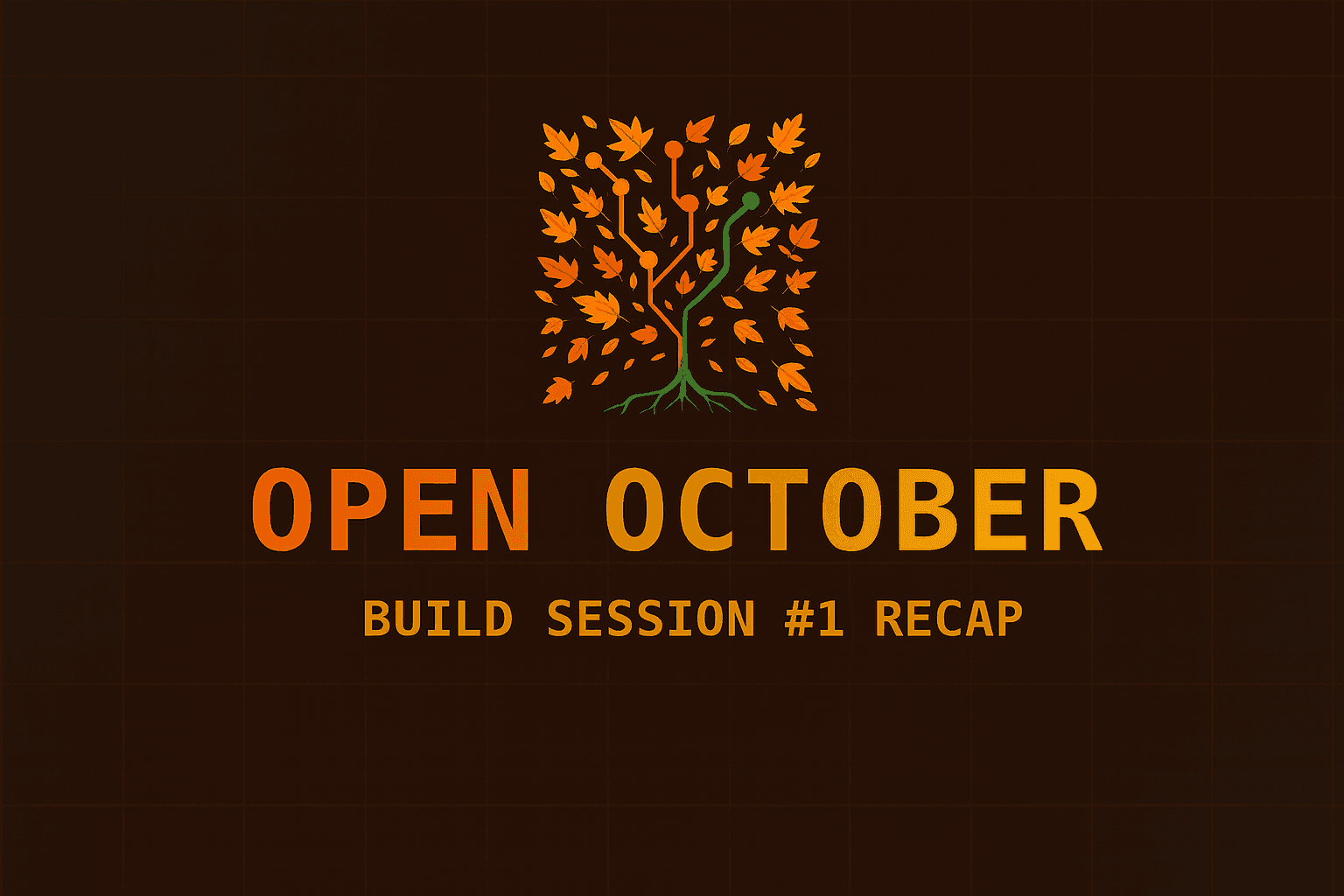
🛠️ Open October Build Session #1 Recap
Our first build session brought together new and returning contributors to share updates and project ideas.
DePIN = Decentralized Physical Infrastructure Networks
This refers to physical systems (like wireless networks, mapping, compute, and energy grids) built using blockchain incentives and operated by individuals or small groups instead of centralized corporations.
Deploy hardware (like a wireless hotspot or dashcam)
Provide a service (Wi-Fi, map data, compute, etc.)
Earn crypto rewards
More people deploy, more people use it → network grows
What it is: A decentralized cell phone network.
How it works: You install a Helium "hotspot" using your own internet connection. That hotspot acts like a micro cell tower.
Users connect (like AT&T or T-Mobile customers roaming) → you get paid in $MOBILE or $HNT tokens.
Tech stack: Uses LoRaWAN for long-range low-bandwidth IoT communication, and Helium 5G for mobile.
Learn more: https://heliummobile.com/
Proof of Coverage: The network verifies that your hotspot is providing useful signal/data and rewards accordingly.
Hotspot hardware is tied to your wallet via an NFT – that’s how the network knows where to send rewards.
What it is: A decentralized alternative to Google Street View.
How it works: You drive around with a dashcam that uploads road footage.
You earn $HONEY tokens for useful images.
Data is used by companies like Volkswagen to train autonomous vehicles.
Learn more: https://hivemapper.com/
Map freshness: Unlike Google’s once-every-few-years updates, Hivemapper maps are updated daily.
Privacy features: Configurable range to avoid recording sensitive locations, and automatic face/license plate blurring.
What it is: A decentralized cloud (compute) network.
How it works: People with spare GPU or CPU power rent it out through the network.
You earn tokens for compute cycles used by others (e.g. AI model training, video rendering).
Learn more: https://render.com/ https://akash.network/
Decentralized compute: Instead of relying on AWS or Google Cloud, people spin up workloads across a global mesh of contributors.
AI infrastructure: Massive growth due to LLMs and demand for affordable GPU access.
What it is: A device you plug into your car (via OBD-II port) that collects vehicle data (speed, location, diagnostics).
You own the data and can sell it to insurers, researchers, or apps.
You earn $DIMO tokens for useful data.
Learn more: https://dimo.co/
“User as node” model: Your car becomes part of the data infrastructure.
Data monetization: Instead of GM/Ford selling your car data, you sell it.
Emission-based rewards: Early projects emit a fixed number of tokens to bootstrap growth (like Helium IOT).
Usage-based rewards: Newer models require actual usage (i.e., data flowing through your node) for you to earn.
Staking: Some networks require staking to operate nodes, earn more rewards, or participate in governance.
Deploy hardware
Network verifies your contribution (coverage, bandwidth, images, compute cycles, etc.)
You receive tokens
Those tokens are either sold or staked
Some networks burn tokens when usage increases, reducing supply
Validators: Some networks (like Akash) require validators to verify data and transactions — often require staking.
Governance: Token holders may vote on protocol upgrades, emission rates, etc.
Risks:
Overbuilt infrastructure (too many devices, not enough users)
Centralized governance (only a few entities controlling rewards)
Speculation (price spikes unrelated to real-world usage)
Regulatory issues (particularly in energy/telecom sectors)
Anyone can participate:
Deploy a hotspot, dashcam, or bandwidth-sharing plug-in
Join Discord communities and give feedback
Help with documentation or write proposals (DAOs often reward this)
Use the services (buy a DIMO device, test a DePIN app, etc.)
Get notified when I publish new posts about building meaningful tech for real communities.

Our first build session brought together new and returning contributors to share updates and project ideas.

OpenOctober kickoff recap: creatives + technologists aligning to build open, local-first tools for Detroit. Submit your project by Oct 7.

At this month’s Vibe Coding meetup, we explored how AI tools like Cursor can speed up projects—or derail them without clear direction. I shared the Renaissance City LaunchPad, a cultural shift and support ecosystem empowering community organizers to build, own, and sustain their own technology.